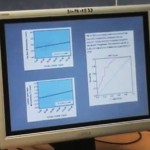Editorial: The importance of citrate in patients with calcium stones and loss of bone mineral density
Stone disease and osteopaenia are both common conditions, and reduced bone mineral density (BMD) is an increasingly recognized complication in stone formers; indeed, in a previous paper in BJUI, Arrabal-Polo et al. reported that patients with recurrent stones have lower BMD compared with controls or patients with just a single episode of urolithiasis.
Although the exact pathogenesis of bone loss in stone disease is yet to be determined, the conceptually obvious relationship with hypercalciuria is well documented. In the present study, Arrabal-Polo et al. emphasise that hypocitraturia is also associated with reduced BMD. Furthermore, they found a higher calcium : citrate ratio in patients with a cumulative maximum stone diameter > 20 mm, or in those with frequent recurrences than in controls, and found that this correlated with higher levels of β-crosslaps, consistent with increased bone resorption in these patients.
We commented in our previous editorial that metabolic abnormalities should be sought in recurrent stone formers, and managed in a multi-disciplinary setting. In addition to dietary advice, options for treatment include bisphosphonates (which inhibit bone resorption, and are commonly used in osteoporosis), thiazide diuretics (which reduce calcium excretion and can increase BMD) and potassium citrate (which acts as an alkalinizing agent mitigating the bone restorative effect of acidosis). This approach is supported by recent data in medullary sponge kidneys, in which hypercalciuria and hypocitraturia were commonly detected in association with reduced BMD. Patients who were treated with potassium citrate were found to have increased urinary pH citrate levels, and an improvement in their BMD.
In the present article, Arrabal-Polo et al. suggest using a calcium : citrate ratio of 0.25 for predicting the risk of future recurrent stone formation, but this value could equally be used to predict the risk of patients having reduced BMD and the complications that may follow. Either way, their findings strengthen the argument for metabolic screening of recurrent stone formers, and for an assessment of these patients’ BMD. Patients can then be appropriately treated with a thiazide diuretic, potassium citrate, or a bisphosphonate, either singly or in combination, according to the abnormalities detected and their progress on treatment.
Daron Smith
Stone and Endourology Unit, University College Hospital, London, UK
Chris Laing
UCL Centre for Nephrology, Royal Free Hospital London, London, UK



